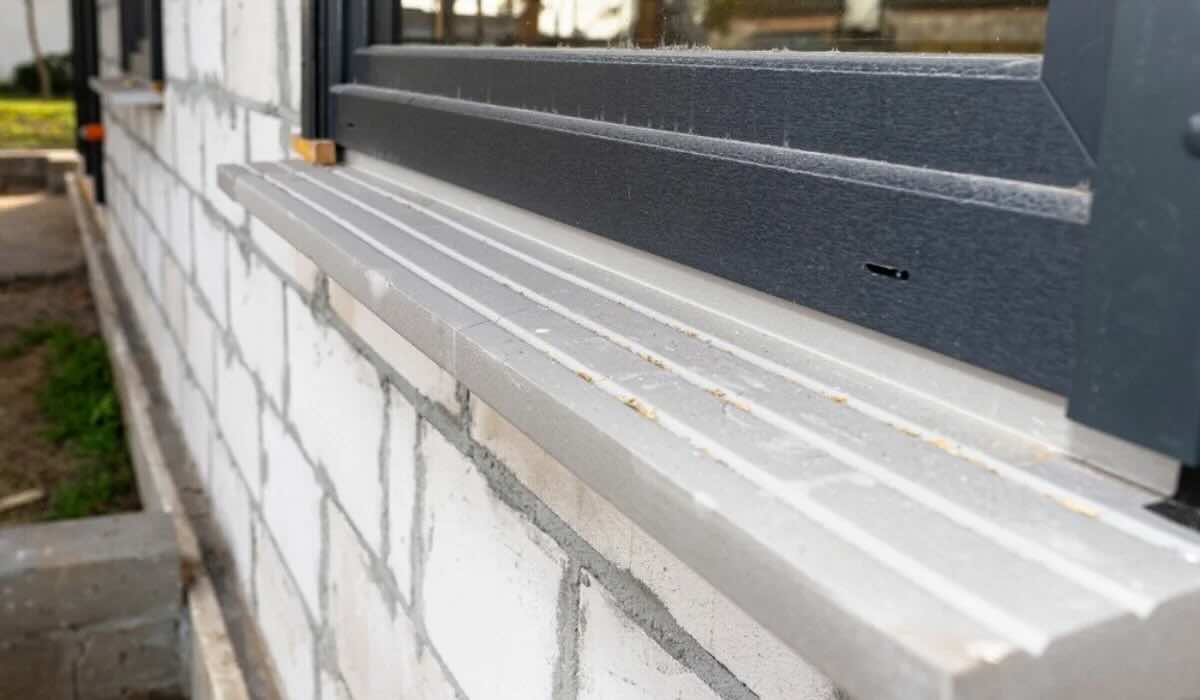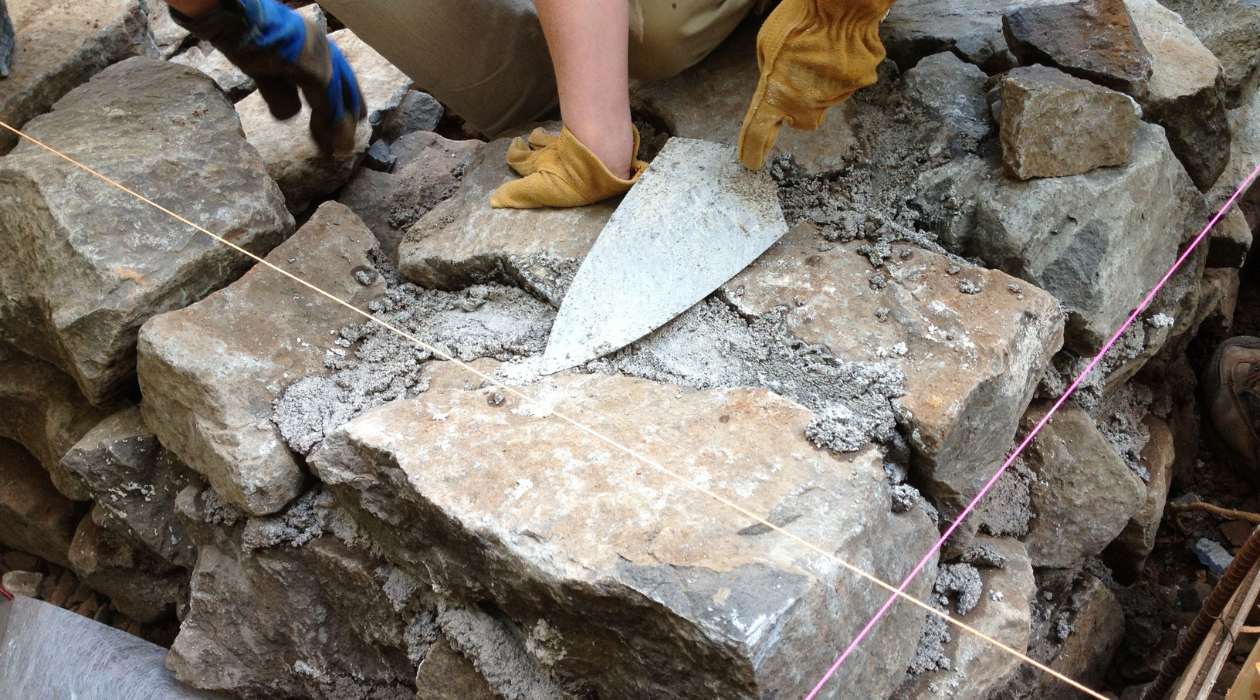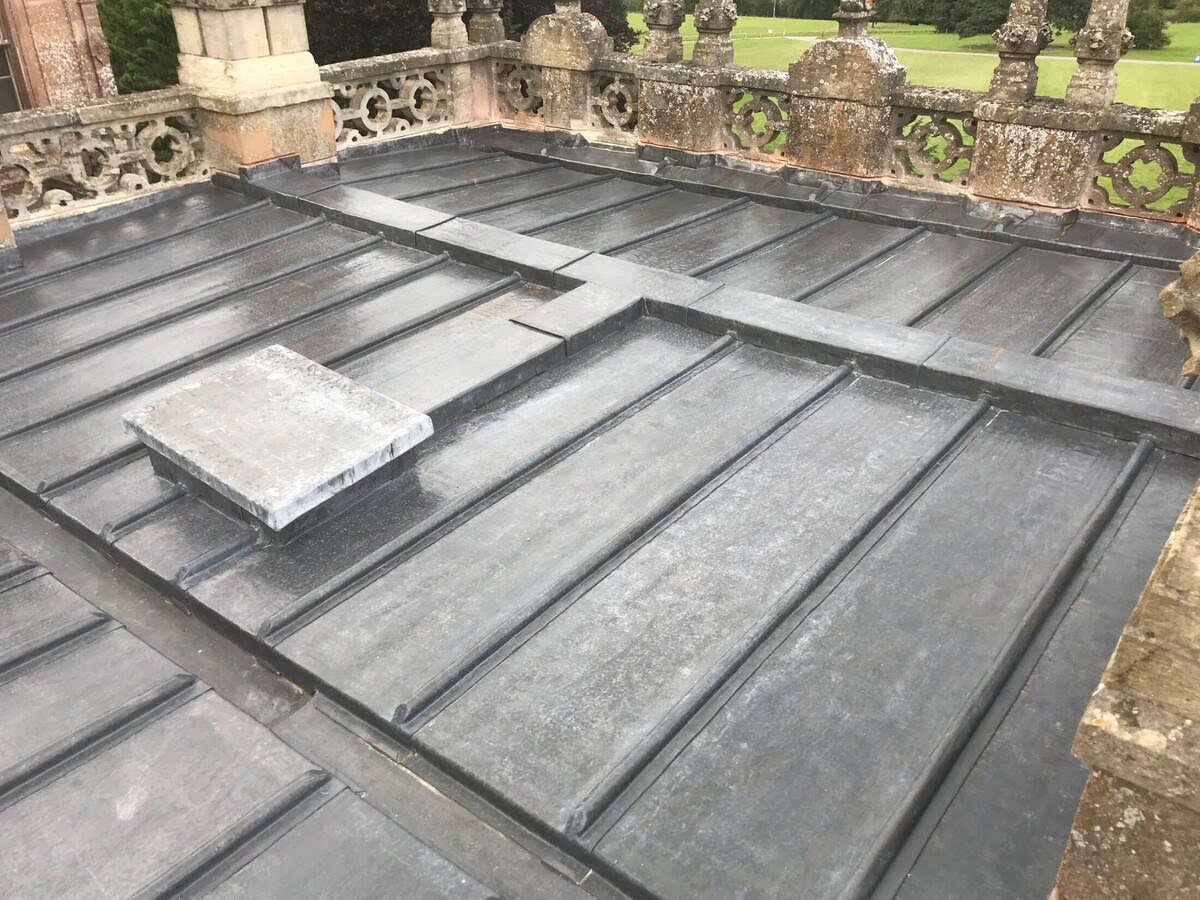Home>diy>Building & Construction>How Is Math Used In Construction


Building & Construction
How Is Math Used In Construction
Modified: January 9, 2024
Discover how math is essential in the field of building construction. From measuring materials to calculating dimensions, learn how math plays a crucial role in every stage of construction.
(Many of the links in this article redirect to a specific reviewed product. Your purchase of these products through affiliate links helps to generate commission for Storables.com, at no extra cost. Learn more)
Introduction
Construction is a complex and intricate field that requires precision, accuracy, and attention to detail. It involves the art and science of building structures, roads, bridges, and other infrastructure. Behind every successful construction project lies a deep foundation of mathematical principles and calculations. Math is an essential tool that helps construction professionals design, plan, and execute projects with efficiency and accuracy.
In this article, we will explore the importance of math in construction and how various branches of mathematics play a vital role in different aspects of the construction industry. From measurements and calculations to algebraic equations and trigonometric functions, math is omnipresent in the construction process.
So, whether you are a construction professional looking to brush up on your math skills or a student considering a career in construction, buckle up and prepare to dive into the world where math and construction intersect!
Key Takeaways:
- Math is the foundation of construction, enabling precise measurements, accurate calculations, and problem-solving. From geometry to algebra, calculus, statistics, and trigonometry, math is essential for successful and efficient construction projects.
- Construction professionals leverage math to optimize resources, assess risks, and ensure structural integrity. Embracing mathematical principles enhances project planning, leading to visually appealing, safe, and efficient structures.
Read more: What Math Do Construction Workers Use
Importance of Math in Construction
Mathematics serves as the backbone of construction, providing the necessary framework for precise measurements, calculations, and problem-solving. Here are some key reasons why math is crucial in the construction industry:
- Accurate Measurements: Math enables construction professionals to accurately measure distances, areas, volumes, and angles. Precise measurements are essential for determining the quantity of materials needed, creating blueprints, and ensuring the structural integrity of buildings.
- Precise Calculations: Construction projects involve complex calculations, such as estimating costs, determining load-bearing capacities, and analyzing structural stresses. Math helps in performing these calculations accurately, minimizing the risk of errors or miscalculations that could lead to project delays or structural failures.
- Problem-Solving: Construction is full of challenges and problem-solving opportunities. Math equips professionals with the analytical and logical reasoning skills needed to troubleshoot issues, make informed decisions, and find innovative solutions to complex problems.
Now, let’s explore one of the core branches of math that plays a significant role in construction: Geometry.
Geometry in Construction: Measurements and Calculations
Geometry is a branch of mathematics that deals with the properties, relationships, and measurements of shapes, angles, and dimensions. In construction, geometry is fundamental for accurate measurements and calculations. Here’s how geometry is applied in the construction industry:
- Measuring Distances: Geometry allows construction professionals to measure distances between points accurately. This is essential for determining the layout and alignment of structures, roads, and utilities. Tools like theodolites, laser rangefinders, and GPS help in measurement, but the underlying principles are based on geometry.
- Calculating Areas and Volumes: Geometry provides formulas and techniques to calculate the areas and volumes of different shapes. Construction professionals rely on these calculations to determine the amount of material required, such as concrete, steel, or insulation.
- Understanding Angles and Slopes: Geometry is essential for measuring and calculating angles, slopes, and inclinations in construction projects. For example, roof slopes, stair angles, and gradients of roads and ramps all rely on geometric principles.
- Ensuring Symmetry and Proportions: Geometry is crucial for maintaining symmetry and proportions in architectural design and construction. It helps architects and engineers create aesthetically pleasing structures that are visually balanced and harmonious.
Geometry plays a significant role in every stage of a construction project, from initial site surveys and measurements to the final execution. It ensures the accuracy, quality, and functionality of the built environment.
Now, let’s explore another branch of mathematics that is extensively used in construction: Algebra.
Geometry in Construction: Angles and Shapes
Angles and shapes are fundamental elements in geometry, and they have significant applications in the construction industry. Understanding angles and shapes is crucial for various aspects of construction, such as structural design, layout planning, and spatial relationships. Here’s how angles and shapes are utilized in construction:
- Structural Design: Angles and shapes play a vital role in determining the stability and strength of structures. Engineers use geometric principles to calculate the optimal angles and shapes of beams, columns, and trusses, ensuring the structural integrity of the building.
- Layout Planning: Before construction begins, precise and accurate layouts need to be established. This involves measuring angles and distances to mark the positions of various elements, such as walls, pillars, and utilities. Geometry helps construction professionals create accurate blueprints and ensure the proper alignment of these elements.
- Estimating Quantities: Geometric formulas are used to estimate the quantities of materials required for construction. For example, the surface area of walls and roofs, which relies on geometric calculations, helps determine the amount of paint or roofing material needed.
- Spatial Relationships: Angles and shapes are crucial for understanding spatial relationships within a construction project. By analyzing geometric properties, architects and engineers can optimize space utilization, ensure proper clearance, and address any potential conflicts.
Understanding angles and shapes in geometry is essential for construction professionals to ensure accurate measurements, efficient layout planning, and structural stability. It is a fundamental aspect that underlies the success of construction projects.
Next, let’s delve into another area where geometry plays a significant role in construction: symmetry and proportions.
Geometry in Construction: Symmetry and Proportions
Symmetry and proportions are important principles in geometry that are used extensively in the field of construction. These principles help create visually appealing structures and maintain balance and harmony throughout the construction process. Here’s how symmetry and proportions are utilized in construction:
- Architectural Design: Geometry is used to achieve symmetrical designs in architecture by carefully balancing and mirroring elements. Symmetrical buildings are visually pleasing and create a sense of harmony.
- Interior Design: Proportions play a crucial role in interior design. Understanding geometric ratios allows designers to create well-proportioned rooms, furniture, and other elements that are aesthetically pleasing to the eye.
- Facade Design: Symmetry and proportions are important considerations in facade design. Architects use geometric principles to ensure that windows, doors, and other building elements are placed symmetrically, enhancing the overall visual appeal of the building.
- Landscaping: Geometry is applied in landscaping to create balanced and harmonious outdoor spaces. Symmetrical planting arrangements, proportionate hardscape elements, and geometrically shaped features can help create visually stunning landscapes.
Symmetry and proportions add an element of beauty and balance to construction projects. They contribute to the overall aesthetics and functionality of the built environment.
Now, let’s transition to algebra and explore its role in the construction industry.
Read more: How To Use A Benchmark In Construction
Algebra in Construction: Solving Equations for Finding Unknowns
Algebra is a branch of mathematics that deals with symbols, variables, and equations. It is widely used in the construction industry for various applications, including solving equations to find unknown values. Here’s how algebra is applied in construction:
- Cost Estimation: Algebraic equations are used to estimate costs in construction projects. By assigning variables to different cost factors such as labor, materials, and overhead expenses, construction professionals can create equations to determine the total cost of a project.
- Quantity Calculation: Algebra is used to calculate quantities of materials required for construction. By solving equations, contractors can determine the number of bricks, bags of cement, or lengths of pipes needed for a particular project.
- Structural Analysis: Algebraic equations are used to analyze the structural behavior of components such as beams, columns, and trusses. By solving equations related to forces, loads, and structural properties, engineers can determine the strength and stability of a structure.
- Time and Resource Management: Algebraic equations are used to manage project schedules and resources. By solving equations related to time, productivity, and resource availability, construction managers can optimize project timelines and allocate resources efficiently.
Algebra provides construction professionals with a powerful tool to solve complex problems and find solutions for unknown quantities. It enables accurate cost estimation, quantity calculation, and structural analysis, leading to efficient and cost-effective construction projects.
Next, let’s explore another aspect of algebra in construction: linear and quadratic equations for estimations.
Algebra in Construction: Linear and Quadratic Equations for Estimations
In the construction industry, linear and quadratic equations are commonly used for estimations and calculations. These types of equations play a significant role in cost estimation, material planning, and predicting project outcomes. Here’s how linear and quadratic equations are utilized in construction:
- Cost Estimation: Linear equations are often used to estimate costs based on various factors such as labor, materials, and equipment. By analyzing historical data and using regression analysis, construction professionals can develop linear equations to predict the cost of similar projects.
- Material Planning: Quadratic equations are employed to optimize material consumption and minimize waste. For example, in concrete slab construction, quadratic equations can be used to determine the optimal dimensions to maximize the area covered with minimal material usage.
- Project Planning: Linear and quadratic equations are used in project planning to estimate timelines and resource requirements. By analyzing past project data and using predictive modeling, construction managers can develop equations to estimate the time and resources needed for specific project tasks.
- Profit Analysis: Linear equations are used to analyze profit and break-even points in construction projects. By considering factors such as revenue, costs, and volume of work, construction professionals can develop equations to determine the minimum amount of work required to achieve breakeven or desired profit levels.
Using linear and quadratic equations allows construction professionals to make informed decisions and optimize various aspects of their projects. It enables accurate cost estimation, material planning, and project management.
Now, let’s move on to another branch of mathematics that plays a crucial role in construction: Calculus.
Understanding basic geometry and algebra is essential in construction. Being able to calculate angles, measurements, and quantities accurately is crucial for creating and following building plans.
Calculus in Construction: Rate of Change and Slope
Calculus is a branch of mathematics that deals with the study of change and motion. It has significant applications in the construction industry, particularly in analyzing rates of change and determining slopes. Here’s how calculus is utilized in construction:
- Rate of Change: Calculus helps construction professionals analyze the rate at which certain quantities change over time. For example, calculus can be used to determine the rate at which concrete sets or how material costs fluctuate over the course of a project.
- Slope Calculation: Calculus enables construction professionals to calculate the slope of various elements, such as roads, ramps, or roof pitches. By determining the slope, engineers can ensure proper drainage, accessibility, and structural stability.
- Optimization: Calculus is used in construction to optimize various parameters. For instance, construction managers can use calculus to optimize resource allocation, minimize costs, or determine the optimal dimensions of structural components to minimize material usage.
- Structural Analysis: Calculus plays a role in structural analysis, particularly when studying the behavior of complex structures under varying loads. By using calculus, engineers can analyze stress distribution, deflection, and stability, ensuring the safety and efficiency of the structure.
By utilizing calculus in construction, professionals can make informed decisions, optimize resources, and ensure the structural integrity of projects. It enables them to analyze rates of change, calculate slopes, and optimize various parameters for a successful construction process.
Next, let’s explore another application of calculus in construction: optimization and finding maximum/minimum values.
Calculus in Construction: Optimization and Maximum/Minimum Values
Calculus plays a vital role in construction when it comes to optimization and finding maximum/minimum values. These principles are used to optimize various parameters, minimize costs, and ensure optimal performance in construction projects. Here’s how calculus is applied:
- Optimization: Calculus is used to optimize construction projects by finding the best possible solutions. Construction professionals can use calculus techniques, such as differentiation and optimization algorithms, to maximize resource utilization, minimize costs, and enhance project efficiency.
- Finding Maximum and Minimum Values: Calculus enables construction professionals to determine critical points, including maximum and minimum values. This information is essential for various applications, such as analyzing stress distribution in structures, determining the optimal design parameters, and optimizing scheduling and resource allocation.
- Cost-Benefit Analysis: Calculus helps construction professionals perform cost-benefit analysis by analyzing the trade-offs between different variables. By quantifying the costs and benefits associated with various options, construction managers can make informed decisions based on the principles of calculus.
- Performance Optimization: Calculus is used to optimize the performance of construction systems and processes. By analyzing rate of change and optimizing variables, such as equipment settings, flow rates, or material application rates, construction professionals can enhance overall performance and efficiency.
By utilizing calculus for optimization and finding maximum/minimum values, construction professionals can make data-driven decisions that lead to cost-effective and efficient project outcomes. It allows for the optimization of resources, schedules, and performance.
Now, let’s explore how statistics plays a vital role in the construction industry.
Read more: How Is Concrete Used In Construction
Statistics in Construction: Data Analysis for Project Planning
Statistics is a branch of mathematics that involves collecting, analyzing, interpreting, and presenting data. In the construction industry, statistics plays a crucial role in project planning by providing valuable insights into trends, patterns, and risks. Here’s how statistics is applied in construction:
- Data Collection: Statistics helps construction professionals collect and organize data related to various aspects of a project, such as costs, schedules, resources, and quality. This data serves as a foundation for analysis and decision-making.
- Data Analysis: Statistical analysis techniques, such as regression analysis and trend analysis, are used to analyze construction data. By identifying patterns and trends, construction professionals can make informed predictions and forecasts, allowing for better project planning and risk management.
- Risk Assessment: Statistics is used to assess and quantify risks associated with construction projects. By analyzing historical data and using probability distributions, construction professionals can estimate the likelihood of project delays, cost overruns, and other potential risks.
- Quality Control: Statistics is utilized to monitor and control the quality of construction projects. By using statistical process control methods, construction professionals can identify variations and deviations from expected quality standards, allowing for timely corrective actions.
By leveraging statistics, construction professionals can make data-driven decisions, improve project planning, and enhance overall project performance. It enables them to effectively analyze data, assess risks, and ensure quality control throughout the construction process.
Next, let’s explore how trigonometry plays a vital role in construction.
Statistics in Construction: Probability and Risk Assessment
Statistics plays a critical role in construction by providing tools for probability and risk assessment. Construction projects are inherently associated with uncertainties and risks, and statistics helps in quantifying and managing these uncertainties. Here’s how statistics is applied in probability and risk assessment in construction:
- Probability Assessment: Statistics allows construction professionals to assess the probability of various events occurring during a project. By analyzing historical data and using probability distributions, such as the normal distribution or the Poisson distribution, the likelihood of different outcomes can be estimated. This helps in decision-making and risk mitigation.
- Risk Assessment: Statistics provides a framework for assessing and analyzing risks in construction projects. Using techniques like Monte Carlo simulation, construction professionals can model different scenarios and evaluate the associated risks. By quantifying and prioritizing risks, effective risk management strategies can be developed and implemented.
- Cost and Schedule Estimation: Statistics is used to estimate costs and schedules in construction projects. By analyzing historical data and using statistical techniques like regression analysis, construction professionals can develop accurate cost and schedule estimates, accounting for uncertainties and risks.
- Decision Analysis: Statistics assists in decision-making by providing tools for analyzing and comparing different alternatives. Construction professionals can use statistical techniques such as decision trees or sensitivity analysis to evaluate potential outcomes and make informed decisions about resource allocation, project scope, and risk mitigation strategies.
By leveraging statistics for probability and risk assessment, construction professionals can effectively manage uncertainties and make informed decisions throughout the project lifecycle. It allows for better risk mitigation, accurate cost estimation, and improved project outcomes.
Now, let’s explore the role of trigonometry in the construction industry.
Trigonometry in Construction: Right Triangle Applications
Trigonometry is a branch of mathematics that deals with the relationships and calculations of angles and sides in triangles. It has numerous applications in the construction industry, particularly in solving problems involving right triangles. Here’s how trigonometry is applied in construction through right triangle applications:
- Measuring Heights and Distances: Trigonometry is used to measure heights and distances that cannot be directly accessed. By using trigonometric functions such as sine, cosine, and tangent, construction professionals can calculate the height of a building, the length of a road, or the distance between two points.
- Slope and Incline calculations: Trigonometry helps in calculating slopes and inclines in construction projects. By using the tangent function, construction professionals can determine the angle of a slope or incline, ensuring proper drainage, accessibility, and safety.
- Structural Stability: Trigonometry is used in analyzing the stability of structures. Engineers employ trigonometric principles to calculate the forces acting on different components of a structure, assess the angles of inclination, and determine the stability of structures under various loads and conditions.
- Roof Design: Trigonometry is essential in designing roof systems, especially for complex roof configurations. By applying trigonometric principles, architects and engineers can determine the angles and dimensions of roof rafters, ensuring proper installation and structural integrity.
Trigonometry plays a crucial role in solving right triangle problems in construction. It enables construction professionals to accurately measure heights and distances, calculate slopes and inclines, assess structural stability, and design roof systems with precision.
Now, let’s conclude our exploration of the role of math in construction.
Trigonometry in Construction: Trigonometric Functions for Calculations
Trigonometry is a branch of mathematics that deals with the relationships and calculations of angles and sides in triangles. It has extensive applications in the field of construction, where accurate calculations and measurements are crucial. Trigonometric functions, such as sine, cosine, and tangent, enable construction professionals to solve complex problems and make precise calculations. Here’s how trigonometry is applied in construction:
- Structural Analysis: Trigonometry is used to analyze the forces acting on structures, calculate load capacities, and assess stability. By using trigonometric functions, construction professionals can determine the angles and lengths of members, ensuring the structural integrity of buildings, bridges, and other infrastructure.
- Surveying: Trigonometric principles are essential in surveying and land measurements. By using trigonometry, surveyors can determine distances, angles, and elevation differences, creating accurate maps and boundaries for construction projects.
- Geotechnical Engineering: Trigonometry aids in geotechnical engineering by calculating angles of slope stability, analyzing soil mechanics, and measuring inclinations. By using trigonometric functions, construction professionals can assess the stability of slopes and make informed decisions regarding excavations and foundations.
- Structural Design: Trigonometry plays a crucial role in designing and constructing roofs, staircases, and other architectural elements. By applying trigonometric functions, architects and engineers can calculate angles, dimensions, and inclinations, ensuring precise and aesthetically pleasing designs.
Trigonometry empowers construction professionals to make accurate calculations, solve complex problems, and ensure the safety and quality of construction projects. By leveraging trigonometric functions, construction professionals can execute projects with precision and efficiency.
Read more: How Is Technology Used In Construction
Conclusion
Mathematics, in all its various branches, is the backbone of the construction industry. From geometry to algebra, calculus, statistics, and trigonometry, math enables construction professionals to accurately measure, calculate, analyze, and plan various aspects of their projects. Precise measurements, calculations, and problem-solving are paramount in the field of construction, and a deep understanding of mathematical principles is essential for success.
Whether it’s measuring distances and angles, solving equations for cost estimation, optimizing resources, or assessing risks and probabilities, math is at the core of every decision made in construction. It allows professionals to plan, design, and construct structures that are not only visually appealing but also safe, functional, and efficient.
By embracing math and utilizing its principles effectively, construction professionals can enhance their project planning, optimize resource utilization, mitigate risks, and ultimately deliver successful construction projects that stand the test of time.
Frequently Asked Questions about How Is Math Used In Construction
Was this page helpful?
At Storables.com, we guarantee accurate and reliable information. Our content, validated by Expert Board Contributors, is crafted following stringent Editorial Policies. We're committed to providing you with well-researched, expert-backed insights for all your informational needs.













0 thoughts on “How Is Math Used In Construction”